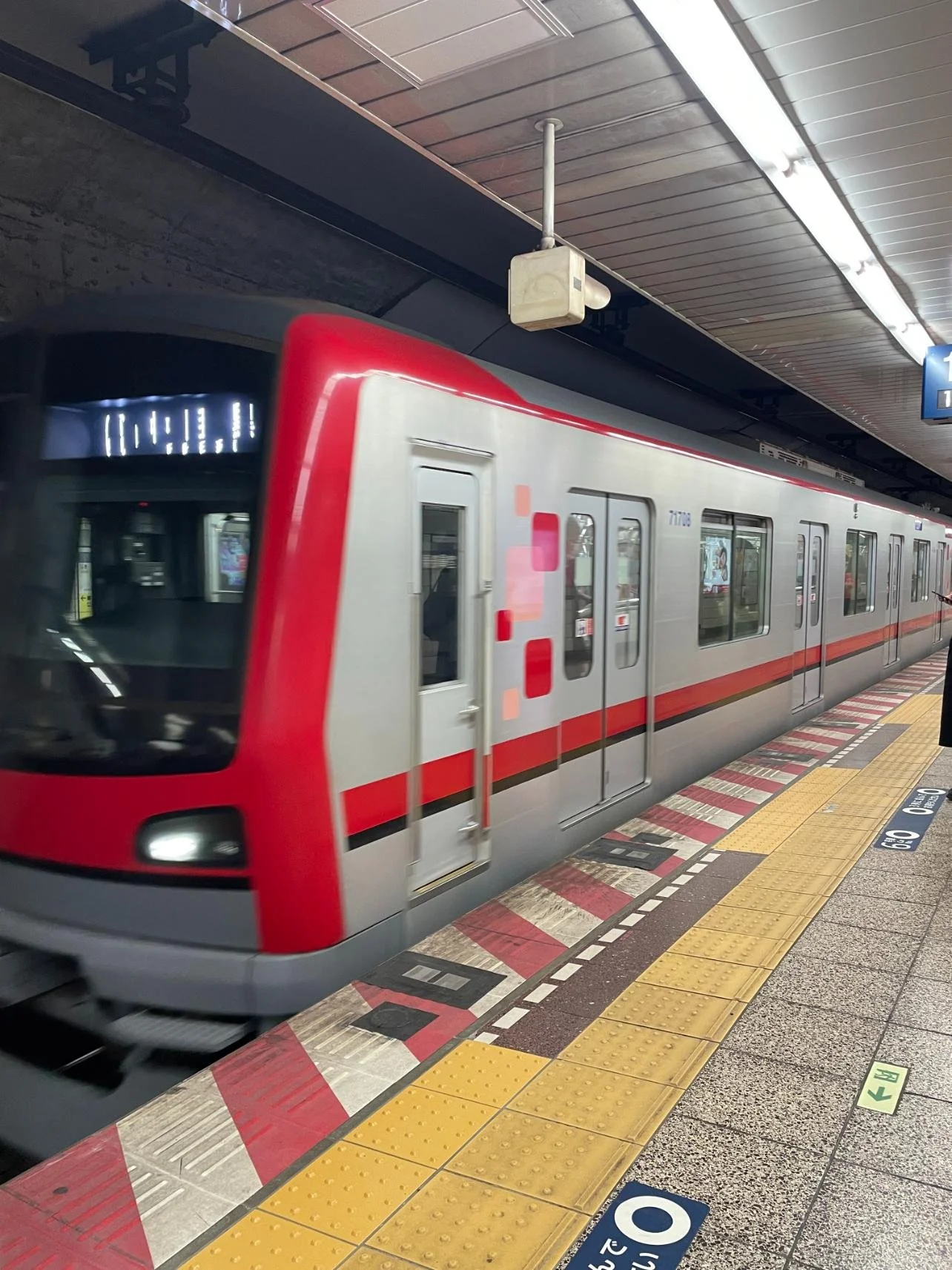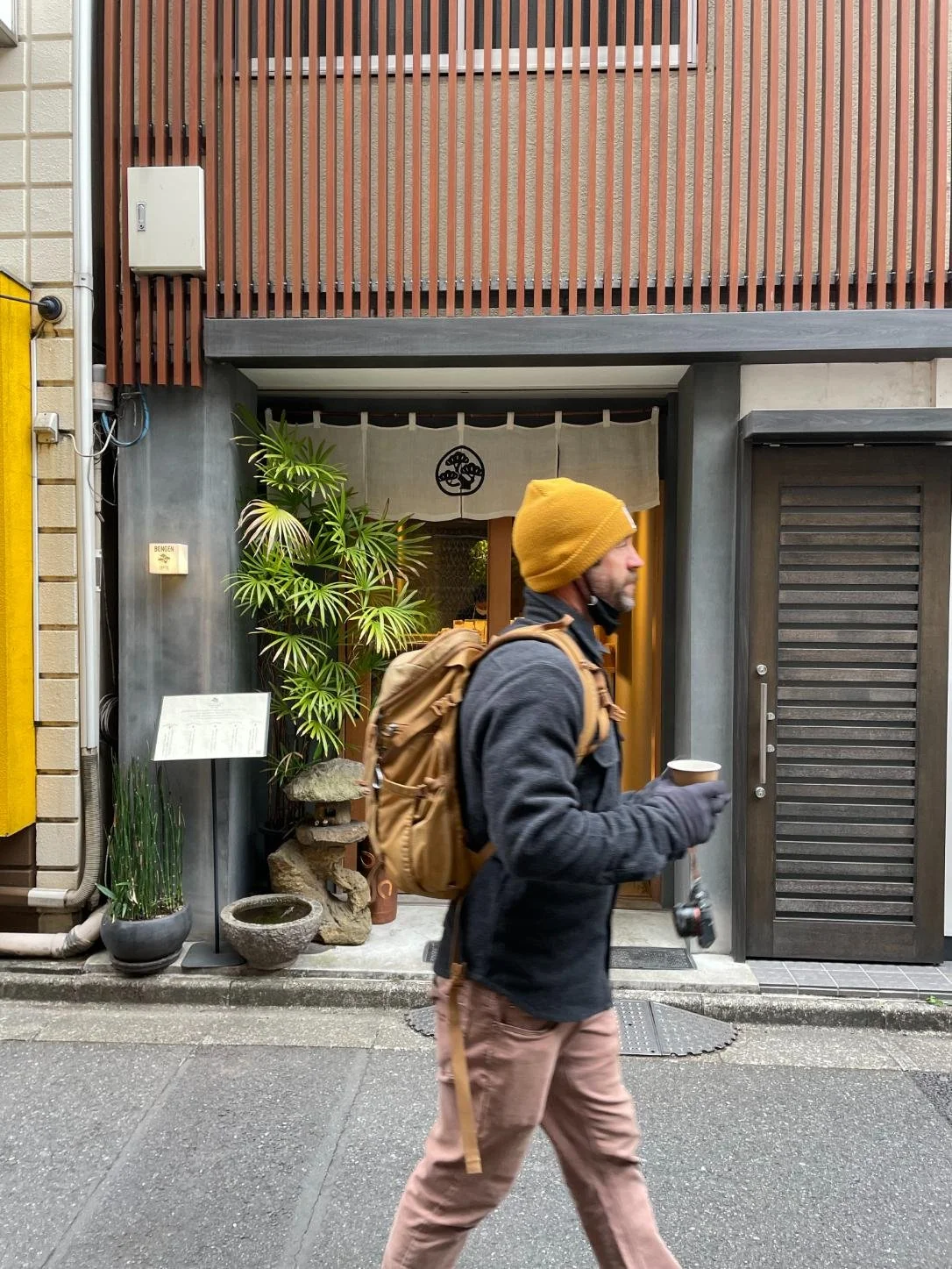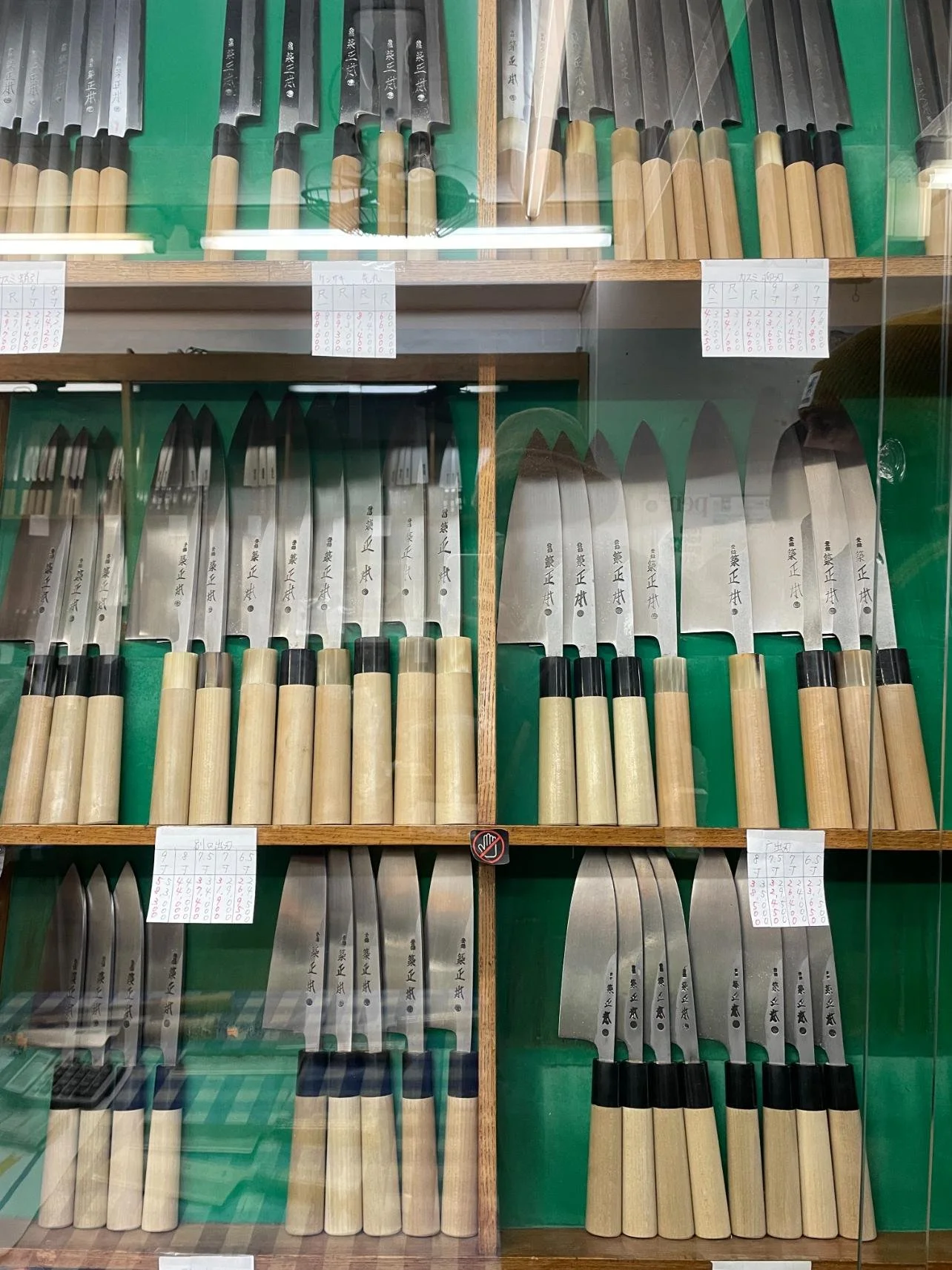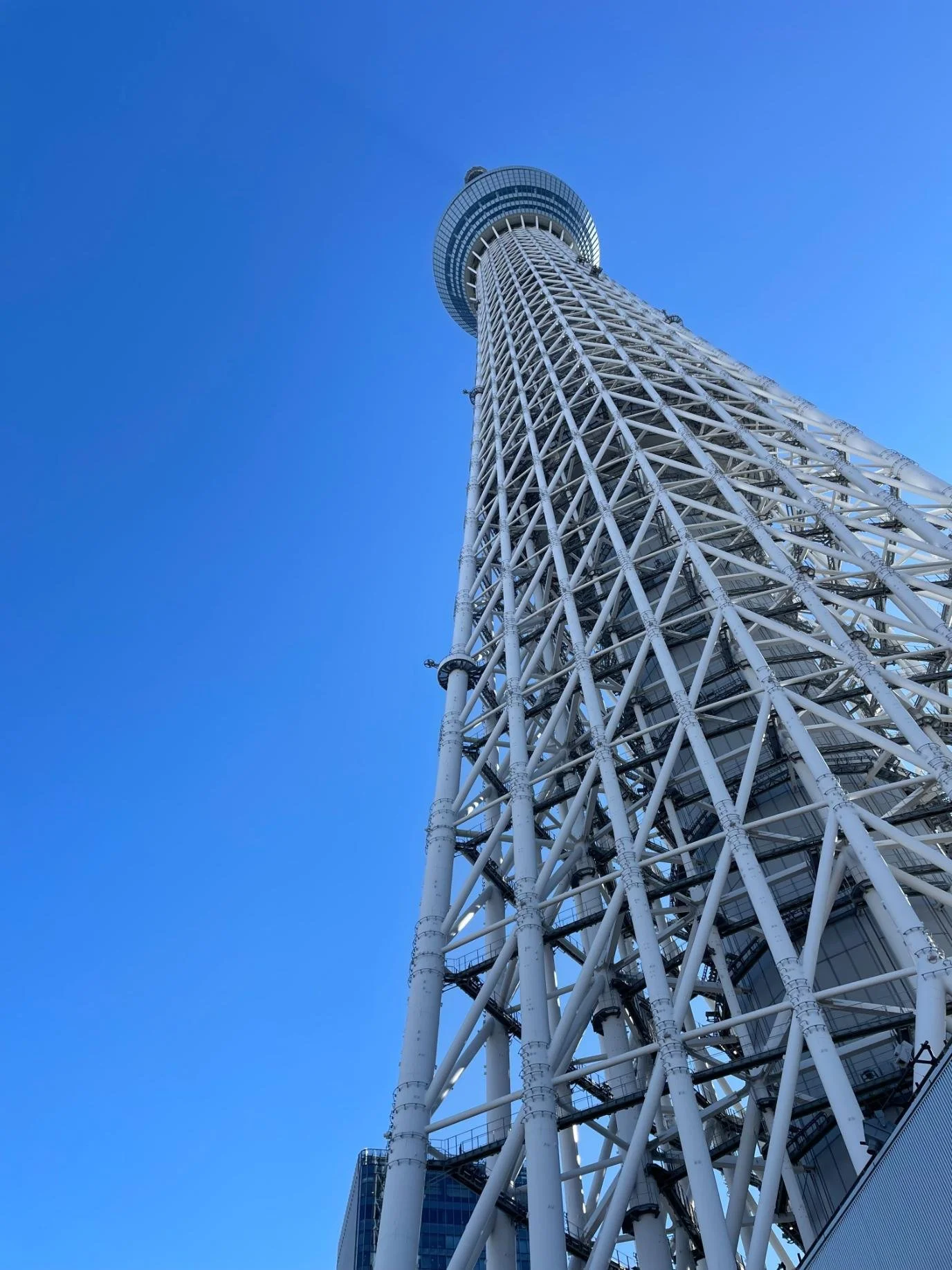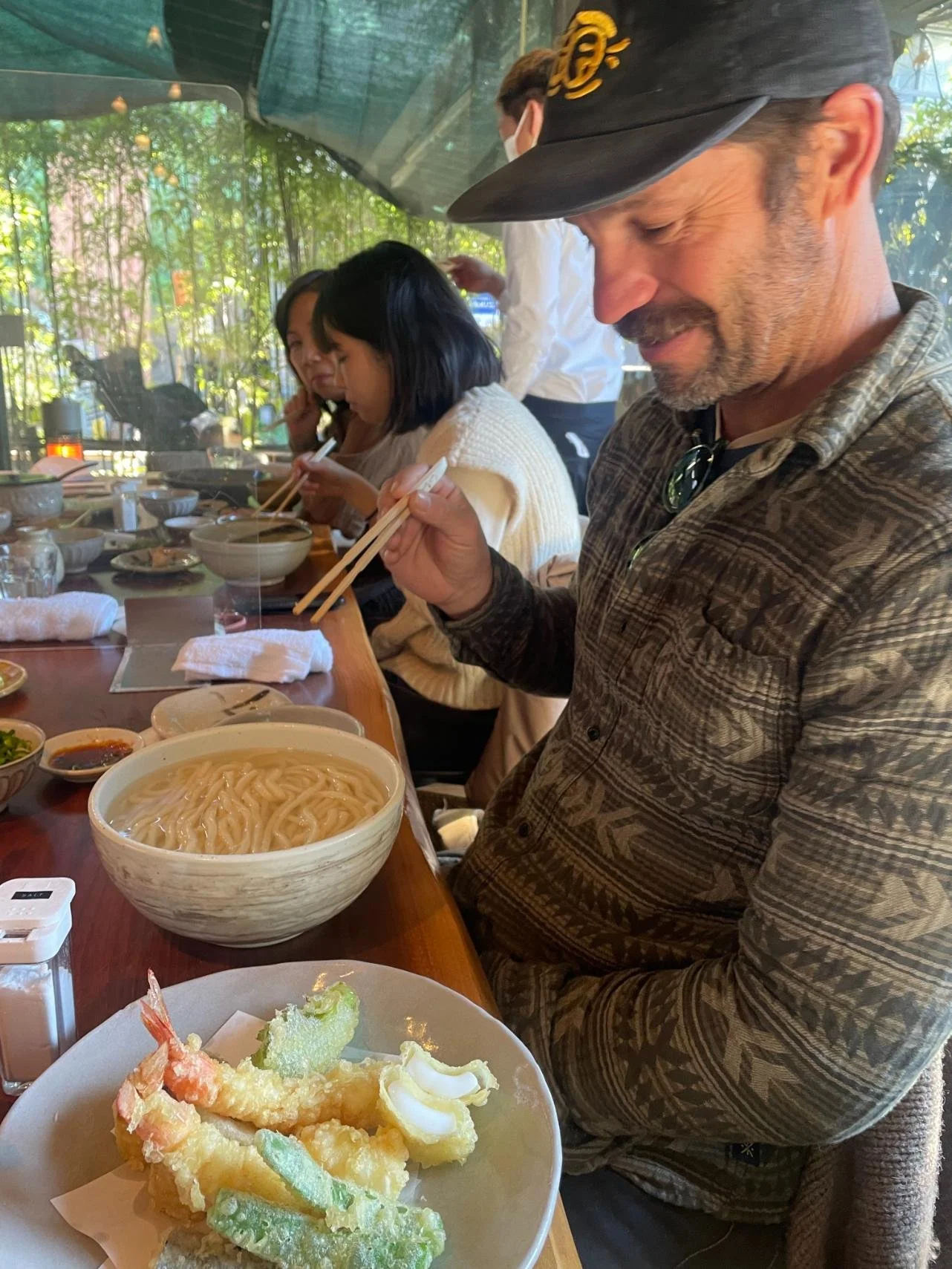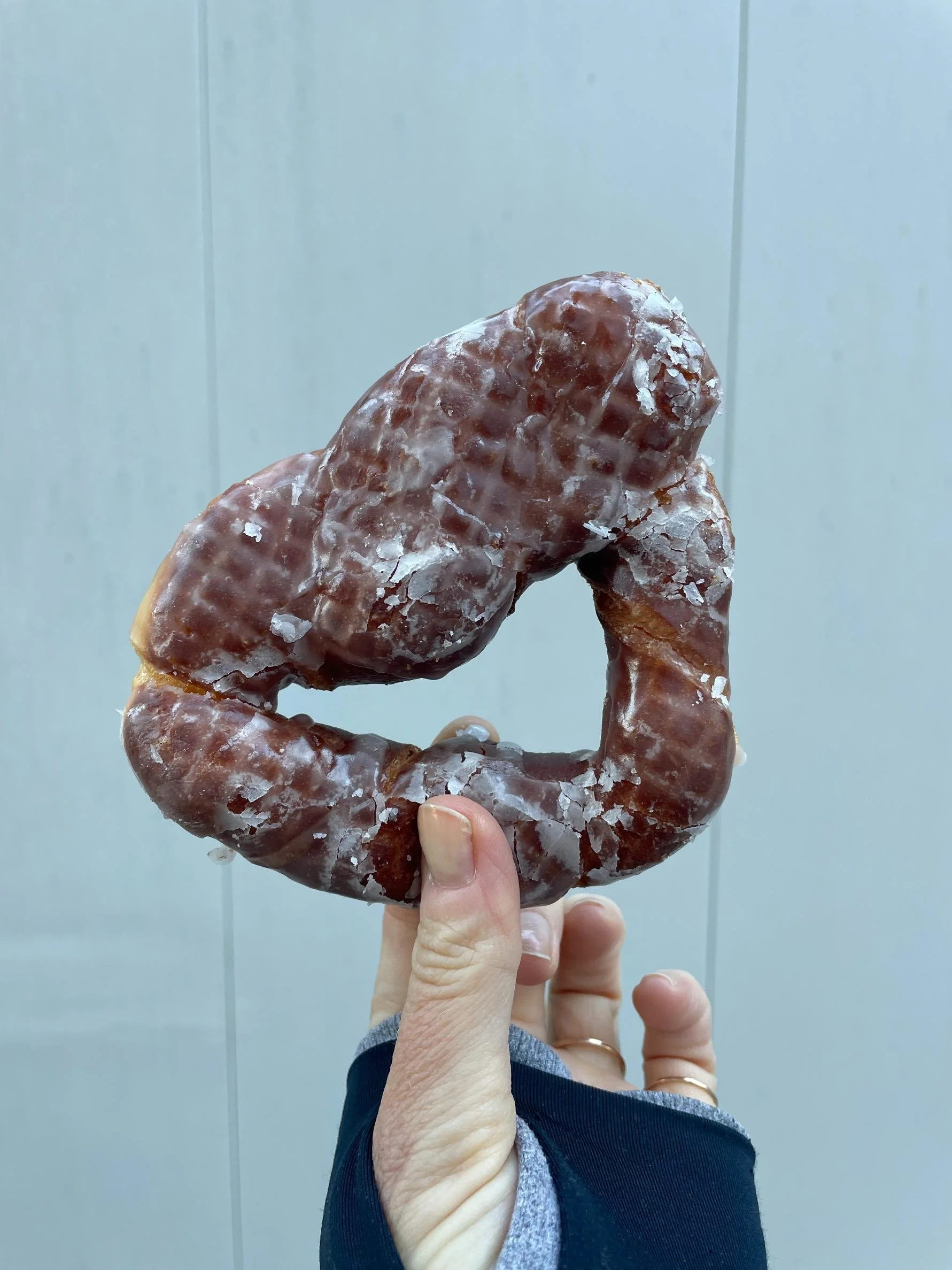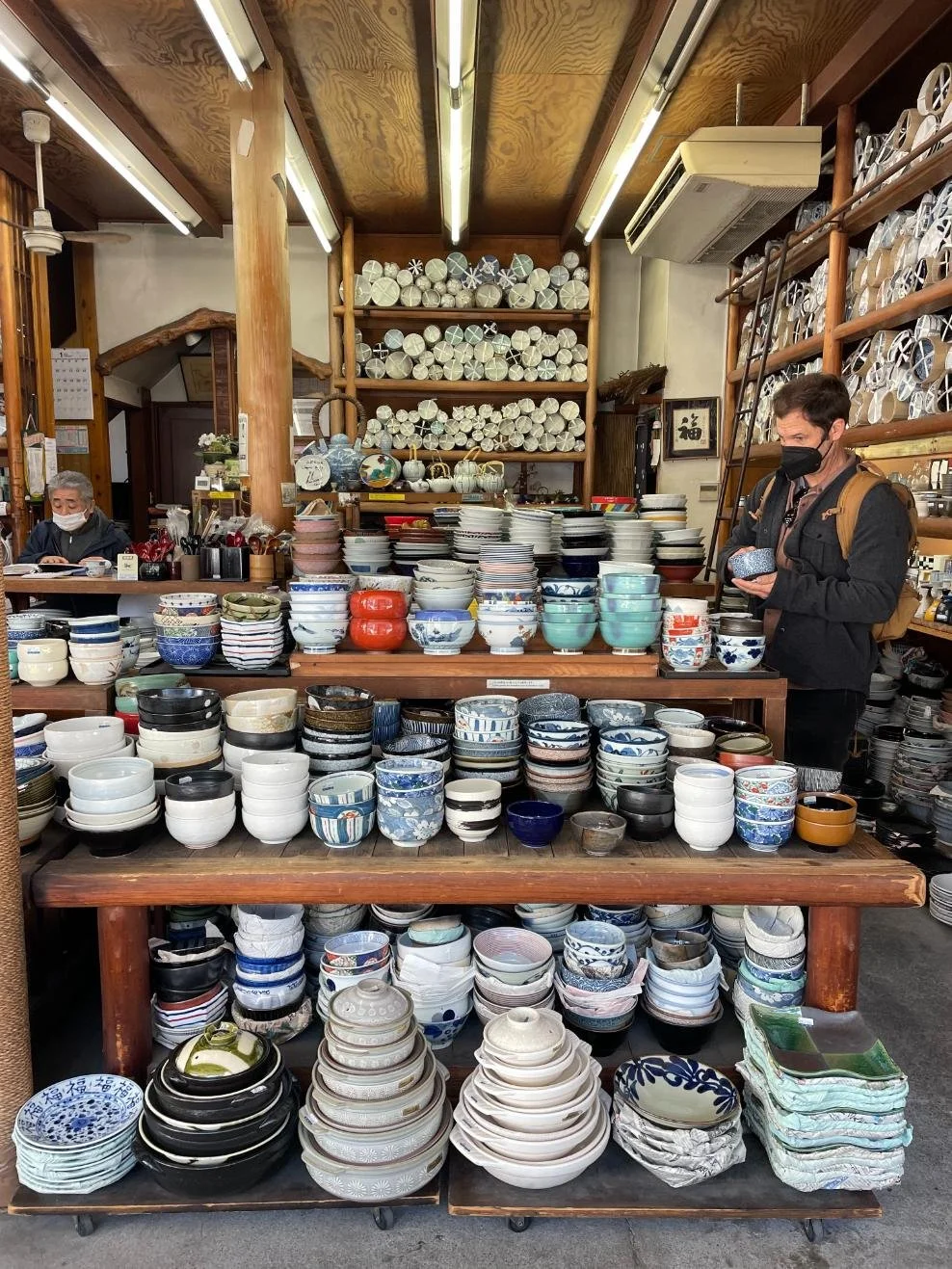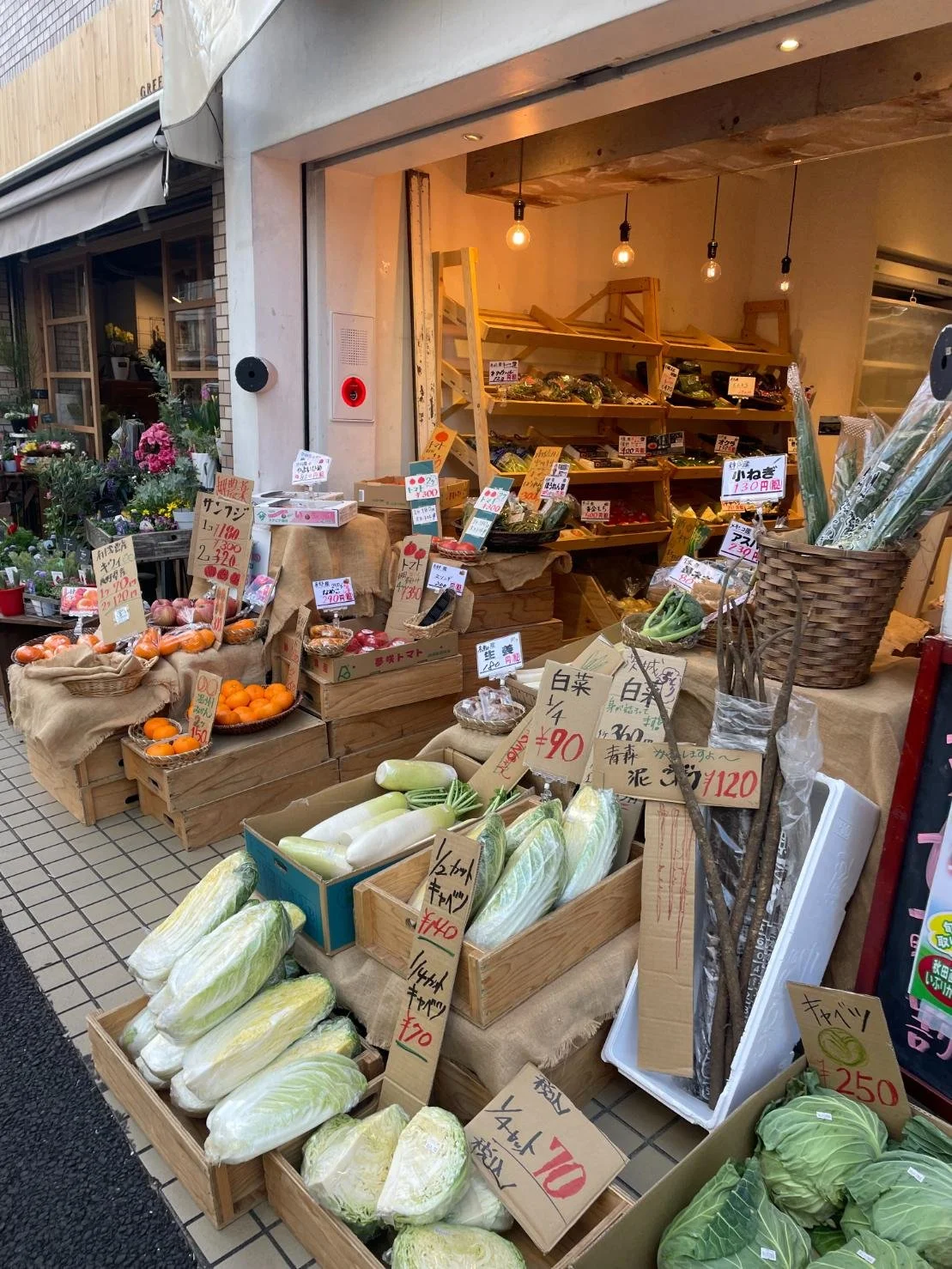Five Days in Tokyo
Planning a last-minute trip to Tokyo or hunting for incredible restaurants and must-see attractions? You’re in the right place. As an event planner with a love for nature, fitness, food, music, and culture, I’ve put together the ultimate 5-day Tokyo itinerary to help you dive into this dynamic city.
A month before we left, I decided to join my partner for a whirlwind five days in Tokyo during late January—the heart of winter. Every day was packed to the brim as we explored this vibrant metropolis, where traditional Japanese culture meets cutting-edge modernity. With a focus on food, drink, and immersive cultural experiences, we did our homework—bookmarking recommendations from Eater, Conde Nast, Thrillist and Trip Advisor to craft the perfect plan. Plus, we saved it all on Google Maps.
Here's how we made the most of our five-day Tokyo adventure!
.
Day 1: Arrival & Quiet Start at Traditional Japanese Hotel
Upon landing in the Tokyo airport, we purchased Pasmo cards, a must-have for seamless travel by train and bus throughout the city. We stopped at a minimart to grab a quick dinner before checking into our hotel. We loaded up on soba noodles, onigiri (rice balls wrapped in seaweed), steamed vegetables, and yakisoba. Minimarts in Japan are comparable to 7-11 but with way better food options.
Exhausted from our journey, we checked into The Edo Sakura, a cozy ryokan that became one of the highlights of our trip. Staying in a ryokan is a cultural experience in itself: tatami mat floors, sliding shoji doors, and a minimalist design. It was simple and charming. We were greeted with impeccable hospitality—tea as we waited for our room—and guided to pre-order our breakfast, with the choice of Japanese or American options.
After a long journey, we soaked in the onsen-style bath felt like pure bliss, and a great antidote to jet lag. We tucked into our futons, laid out low on the floor, under fluffy down comforters. Initially, sleeping on a thin futon took some getting used to, but by the second evening, we were cozy in our beds. Although somewhat uneventful, we loved this slow beginning.
Day 2: Art, Ramen, Fish Market, Knife Shopping, Massages, & Conveyor Belt Sushi
We began the day with a traditional Japanese breakfast at the ryokan: a perfectly rolled egg omelet, umami-rich miso soup, steaming rice, crisp green onion salad, and a refreshing seaweed salad. Jacob opted for salmon and declared it heavenly. Fueled up, we headed to the serene Ono Terusaki Shrine before embarking on the day’s adventures.
Using our Pasmo cards, we jumped on the train and took a bus over to the neighborhood of Toyosu. There, we enjoyed the immersive art exhibition Teamlabs put together. After storing our belongings in lockers, we removed our shoes and socks, rolled up our pants, and waded through ankle-deep water into an enchanting world. Waterfalls cascaded around us, mirrored floors played with light and perception, and projections of blooming flowers seemed to react to our movements. It was magical—a dreamscape come to life. The full body sensory experience is like something I’ve never experienced.
After the exhibit, we grabbed a donut and ramen at UZU, a vegan pop-up restaurant inside a shipping container. The soy-based ramen was served with a roasted tomato and tons of garlic and ginger. It was the best thing we ate on the trip.
We strolled through Ginza, Tokyo’s upscale shopping district, where we discovered Bongen Coffee. Their lattes were smooth perfection, warming us on a brisk afternoon. A nearby photobooth inspired some silly snapshots. And we couldn’t resist grabbing cream-filled desserts made fresh before our eyes.
We made our way to the famous Tsukiji Outer Fish Market, although a little late in the day. We admired all the sushi restaurants and street food. Jacob enjoyed eel yakitori, while I ate candied strawberries on a stick. We browsed the shops and settled into a knife store where I bought my first kitchen knife—a piece of craftsmanship I’ll treasure.
We headed to the neighborhood of Harajuku, known for its trendy fashion shops and vibrant street art. We ended up getting massages at a small place with great reviews. On our way to dinner, we stumbled upon a very cute artisan foods shop called Kuze Fuku & Sons. We bought various snacks, spices and treats, including wasabi salt and dried fava beans.
It may have been the longest day of the trip. We finished the night off with conveyor belt sushi at Nemuro Hanamaru Ginza. Watching plates of fresh sushi roll by was as entertaining as it was delicious.
Day 3: Temples, SkyTree, Cat Cafe, Udon & Shopping
At dawn, we visited Senso-ji temple, Tokyo’s oldest temple. The air was crisp and quiet as we watched locals perform rituals and pulled our fortunes from a wooden drawer. Mine warned of disappointment, so I tied it to the temple’s rack—a traditional way to leave bad fortunes behind. Japanese are late to rise. Many coffee shops don’t open until 10am! So, we watched the koi swim and watched as the shops set up to open.
From there, we walked along the Sumida River toward the towering Tokyo Skytree, the world’s third-tallest building. We pre-purchased our tickets and waited in a Disneyland-esque lobby for our turn on the elevator. The elevator ride to the 450th floor was thrilling (and slightly nerve-wracking for me). The views from the top were staggering—a vast sea of urban sprawl stretching to the horizon. Worth the stop! The Skytree is in a mall, so we popped around the grocery store and settled on a massive $10 apple and a green smoothie before heading to another neighborhood for Udon!
Lunch was a feast (and compltelty new culinary experiebce for us) at Nezu Kamachiku, a renowned udon restaurant. We learned the best places have long lines and are well worth the wait. We had crisp tempura, fried fish cakes, and bowls of udon with broth served on the side. To eat udon, you have a bowl of noodles and a separate bowl of broth. You fill your broth bowl with tempura flakes, green onion, and ginger to your liking. You then use your chopsticks to move the noodles from their bowl over to the broth bowl. But, you must be careful not to raise your chopsticks too high because the noodles will break and broth with splash everywhere. Despite the sign and cautionary words from our waiter, I learned the good old-fashioned way.
We grabbed an afternoon coffee at Five Coffee, flipped through a magazine, and found an interesting-looking donut shop that happened to be in Tokyo. I made a note of it. We walked to Nedujinja shrine, by suggestion of our waiter at Nezu. Japanese people rarely engaged with us and this was one of the only social interactions we had with a local other than our hotel staff.
A quick detour led us to the bustling Ameyoko shopping district where we browsed stalls and strolled through Ueno Park, home to several museums and Tokyo Zoo. We made it to a cat cafe. An experience I thought I’d enjoy, but turned out to be a little odd. The cats are beautiful, but really only want to be fed and want nothing to do with you. We left as a little girl was crying because the cat scared her. I wouldn’t recommend this activity.
Day 4: Ginko Trees, Art Museum, Donuts, Shibuya Crossing & More Sushi
We set out to see the famous ginkgo trees on Jingu Gaien Ginkgo Avenue, only to find them bare. But serendipity led us to a vintage car show—a delightful surprise.
In Roppongi, we sipped creamy tea lattes at Eight Coffee before visiting the National Art Center, where an exhibit of Japanese comics depicting a woman’s life in NYC captured our attention. The mall next door tempted us with meticulously wrapped $10 strawberries—tiny edible jewels of sweetness.
I insisted on visiting I’m donut?, a donut shop I’d spotted in a magazine the day before. After an hour-long wait, we tried a curry-flavored donut (not my favorite) alongside more conventional flavors. Despite the mixed reviews from my taste buds, the sleek bakery and its imaginative offerings were worth the visit.
We found the cutest coffee shop nearby as we waited to do our walking tour in Shibuya. We had lattes at Chop in Shibuya and read in the warm cafe.
That evening, we explored Shibuya, starting with its iconic crossing, where we watched waves of people crisscross in perfect harmony. Our walking tour offered historical tidbits, but I craved more time to soak in the neighborhood’s vibrant energy.
Dinner was another fun conveyor belt sushi experience at Uobei Shibuya Dogenzaka Store. This time, we ordered from an iPad and the sushi came out no less than 2 minutes later. It was phenomenal sushi and about $1 per plate. We stacked those plates high and left totally entertained and satisfied. Another highlight of our trip!
Day 5: Shopping, Onigiri, Tea Ceremony & Omakase
We got a later start to the day and did some laundry at the hotel, which was nice. We enjoyed coffee, donuts and strawberries from our room before heading to Kappabashi Dougu Street, a neighborhood known for their kitchen equipment and utensils. We found another knife store and bought a different style.
We stopped for a coffee, of course before heading to a local spot for onigiri. Lunch at Onigiri Asakusa was a comforting bowl of miso soup paired with tuna onigiri. Many shops and eateries are tiny. And as a tall human with a backpack and a coat, I feel very large in this country.
We sought a tea shop and sat for a relaxing but formal green tea at JuGetsuDo. Jacob had the sencha and I had my first ever matcha! Both were served with decadent little desserts to cut the bitter tea. We bought some chocolates and headed to our very exciting dinner reservations at Udatsu Sushi, an Omakase sushi experience with a recent Michelin star chef. We enjoyed sake and watching the entire experience. It was the perfect ending to our Tokyo adventure.
While I flew home the next morning, Jacob went to Hakido on a two-week backcountry ski trip! Five days in Toyko was the perfect amount of time to get a taste of the city. We will definitely be back.
General Tips:
Learn Basic Phrases in Japanese
Simple greetings like “Arigatou” (thank you) and “Sumimasen” (excuse me) can make interactions smoother and more respectful.
Embrace the Convenience of Vending Machines
Japan’s vending machines offer everything from hot coffee to fresh fruit and even meals—perfect for a quick snack on the go.Bring Comfortable Shoes
Tokyo is best explored on foot, so comfortable shoes are essential for all the walking you’ll do.No Need to Worry About Cash
Most places accept credit cards, so you don’t have to worry about carrying cash everywhere.Respect the Quiet Culture
Be mindful of the generally quieter public spaces. Keep your phone on silent and avoid speaking loudly in public areas, especially on public transportation.Master the Escalator Etiquette
In Japan, stand still on the right side of the escalator and leave the left side open for people who want to pass. It’s an efficient and considerate system!Use Google Maps
We saved all of our destinations in a list and used Google Maps for public transit guidance, which made navigating Tokyo’s extensive system a breeze.Pack an Adapter for Electronics
Japan uses Type A and Type B plugs and operates on 100V voltage, so bring a travel adapter for your electronics.Get Full-Service Coverage from Your Cell Phone Provider
Most providers offer international service for around $10 per day, which is super helpful for using public transportation and finding places nearby.Plan for Seasonal Highlights
Depending on the season, enjoy activities like hanami (cherry blossom viewing) in spring, autumn leaf peeping, or participating in festivals like the Gion Matsuri in Kyoto during the summer.
Want access to my Google Travel List? It’ll make your trip so much easier and more fun. Just save it to your Google Maps and see the dropped pins and all the business information.



